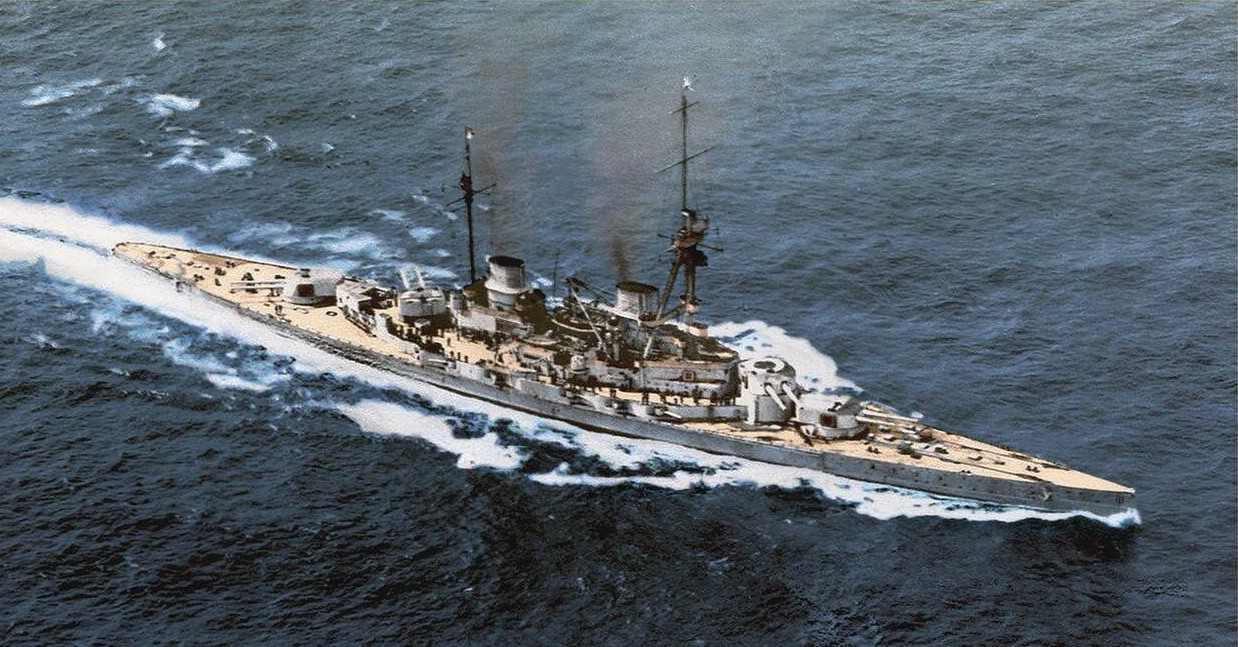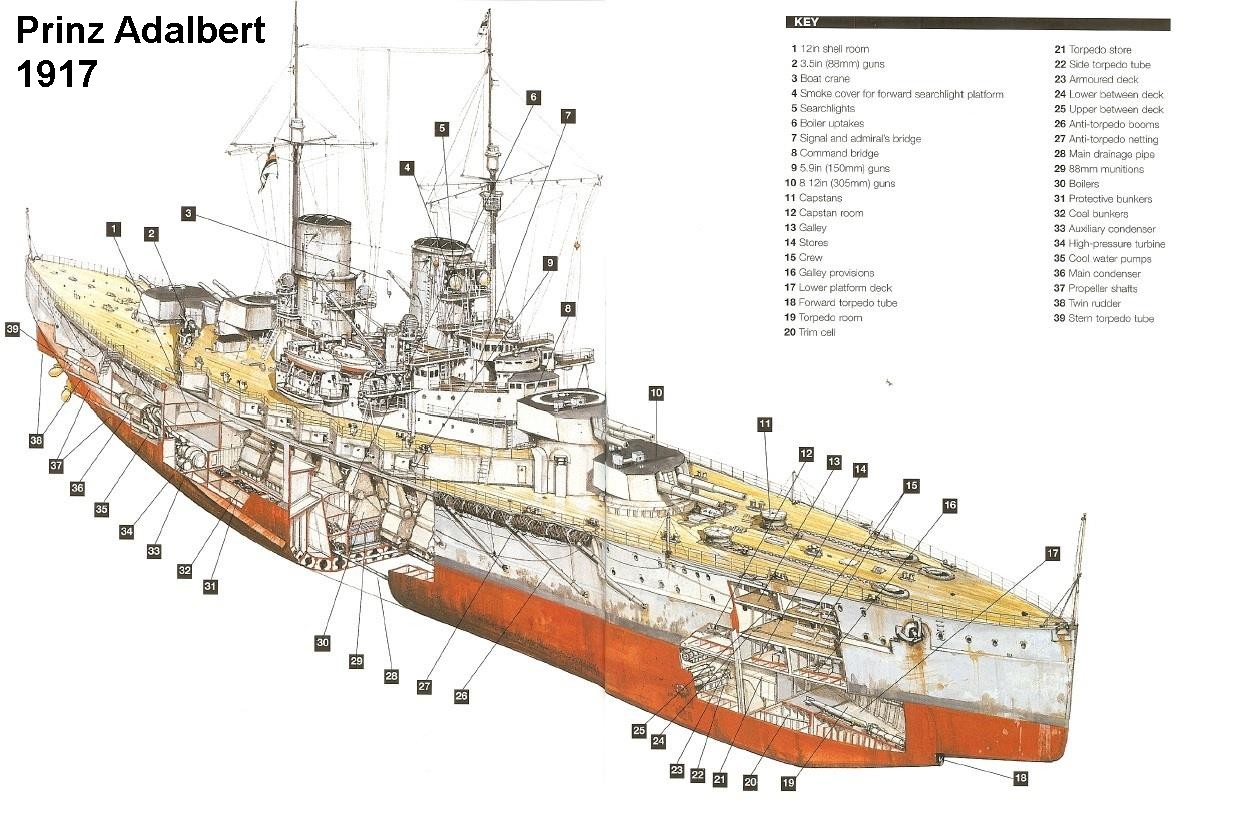
Displacement: 26,600 tons normal, 32,250 tons full load
Dimensions: 690 x 95 x 30 feet
Machinery: 4 shaft, turbines, 85,000shp
Speed: 28 knots
Endurance: 6,000 nmi at 12 knots
Armour: 12" belt, 2" deck, 11"/4.1"/3.4" turrets
Armament:
8 x 12" (4x2)
12 x 5.9" (12x1)
16 x 3.4" (16x1)
Torpedoes: 4 x 19.7" (4x1 submerged)
Crew: 1,200
One of the best balanced capital ships of WW1, they are only outscored by the British Queen Elizabeth class. The later classes (Mackensen, Barfleur etc) never got to show what they could do.
One of these three ships should be lost at Jutland, or maybe one of the previous Von Der Tann class instead. I will have to revisit my "Disposition of German Navy 1919" to see what ends up where.

Until then I suppose I will have to do a WW2 version. Like a lot of the Germanic States ships, the distance between B turret and X turret was very short making upgrades hard to find space for. The difference for the Derfflinger class was the engine room was between X and Y turrets which left the space between A to X for boiler rooms. The main purpose of the upgrades is to provide the ships with, 1. Modern fire control. 2. Better deck armour. 3. Modern Heavy and Light AA batteries. 3. Updated machinery replacements. Those are the essentials, though there may be other changes necessary on a ship by ship basis. The low freeboard of these three ships was ameliorated somewhat by lengthening the bow. This gave some badly needed extra buoyancy forward to offset the 'plunging' of the bow.
The machinery is always a problem in the converted Germanic States Capital Ships. The machinery spaces are always tighter than they would like. The WW1 German ships were built for operations in the North Sea. This makes their range a bit of a problem as well. With the Derfflingers' sea speed of 28 knots is more than adequate. To maintain that is no problem as machinery has gotten smaller and more powerful in the twenty years since the Derfflinger was first designed. To increase range the Germanic States units installed cruising diesels to make 15-18 knots being the fleet cruising speeds. The main steam turbines would then be brought online for full speed. The exhaust ducts for both the diesels and turbines are through the one funnel.

One of the more useful things built into the Germanic States ships was the almost 10 foot of extra breadth compared to the British capital ships. Better underwater protection was a consequence of this, meaning that the Germanic States ships did not require the large bulges fitted to the other countries rebuilt ships.
Without aircraft aboard ship for spotting and scouting, these three ships were never used as raider vessels. They were tied to the battlefleet and operated themselves as scouts pretty much as they did in the First World War.
Displacement: 27,800 tons normal, 34,750 tons full load
Dimensions: 724 x 95 x 30 feet
Machinery: 4 shaft, turbines/diesels, 85,000shp
Speed: 28 knots
Endurance: 11,000 nmi at 15 knots
Armour: 12" belt, 4.7" deck, 11"/4.1"/3.4" turrets
Armament:
8 x 12" (4x2)
16 x 5" (8x2)
12 x 37mm Bofors (6x2)
18 x 20mm (18x1)
Crew: 1,200
Having done up a Disposition Chart all three of these ships are sold overseas or ceded to France.
